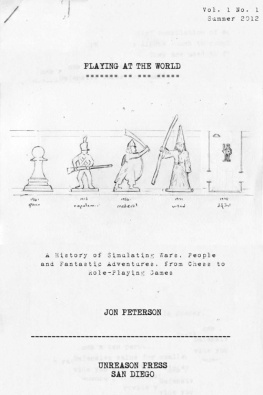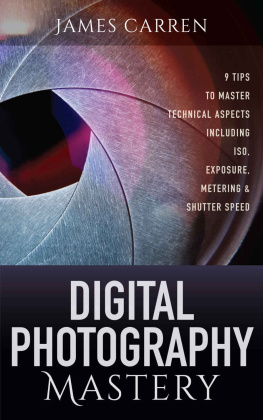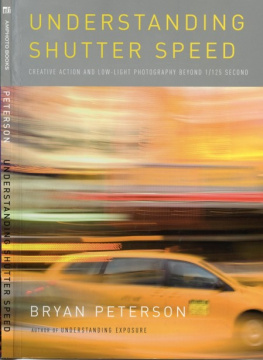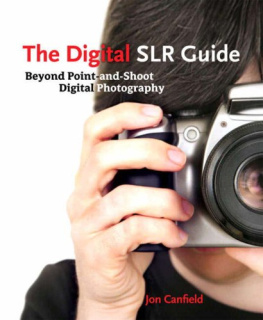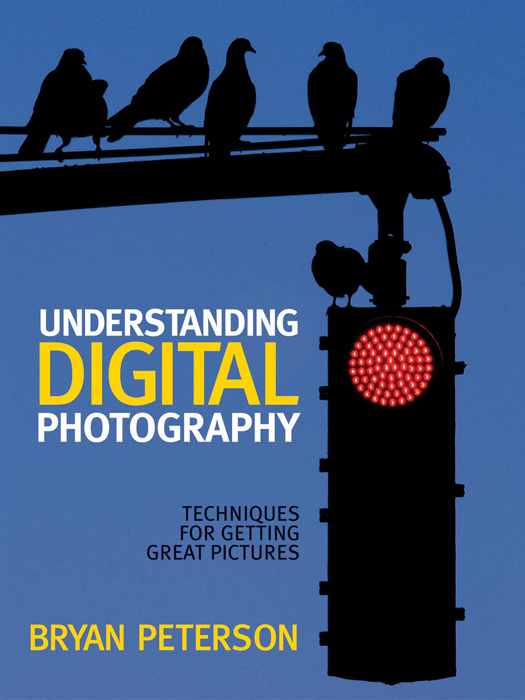ACKNOWLEDGMENTS
I cant express my gratitude enough to the following people at Amphoto Books: Victoria Craven, Senior Acquisitions Editor; Sharon Kaplan, Editorial and Production Director; Bob Ferro, General Manager; Alisa Palazzo, Senior Development Editor (my ever faithful and talented editor); and designer Bob Fillie. You have all given so much of your time and dedication to my books, and as a result, so many new doors have been opened. Thank you, thank you, thank you again!
And I would also like to pay special thanks to Sharon Lowe, (www.photosbysharon.com) a former student who was the catalyst, in many respects, for my taking on the digital darkroom. Her tips and advice clearly set me down the right path!
Senior Acquisitions Editor: Victoria Craven
Senior Development Editor: Alisa Palazzo
Production Manager: Hector Campbell
First published in 2005 by Amphoto Books an imprint of Watson & Guptill Publications, a division of the Crown Publishing Group, Random House Inc., New York
www.crownpublishing.com
www.watsonguptill.com
Text and illustrations copyright 2005 Bryan Peterson
Front cover photograph by Bryan Peterson
Library of Congress Cataloging-in-Publication Data
Understanding digital photography: techniques for getting great pictures / Bryan Peterson.
p. cm.
Includes index.
eISBN: 978-0-8174-0028-6
1. Photography--Digital techniques. I. Title.
TR267.P48 2005
775dc22
2005022321
All rights reserved.
v3.1
Also Available an an eBook:
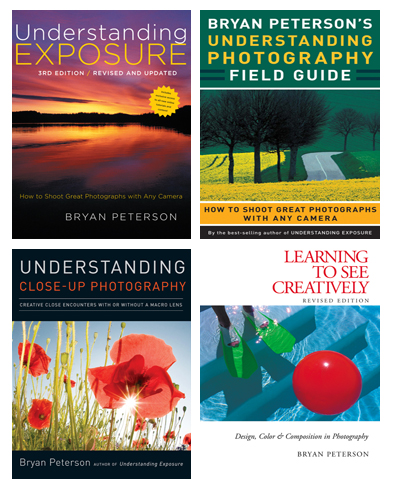
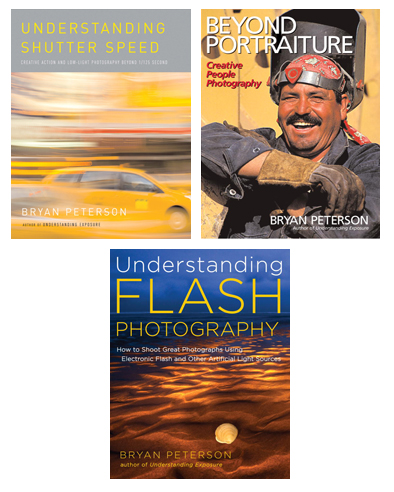
Understanding Exposure, 3rd Edition
Bryan Peterson's Understanding Photography Field Guide
Understanding Close-Up Photography
Learning to See Creatively
Understanding Shutter Speed
Available Spring 2011
Beyond Portraiture
Available Summer 2011
Understanding Flash Photography
To Sophie,
my youngest daughter and fellow shutterbug.
Your enthusiasm for life is always infectious.
You are a gift that I will cherish forever!

Contents
Introduction
Who knows for sure, but someday, the history of photography may be a category on the game show Jeopardy, and what a history it is! It all began with the daguerreotype in 1837. In my mind, that episode of Jeopardy goes something like this:
Ill take History of Photography for $200 please, Alex.
This was the first fixed photographic image.
What is the daguerreotype?
But back to reality: Although the daguerreotype exposure time was long by todays standards (a bit under thirty minutes), this was, indeed, the first fixed image that did not fade. This was a true milestone for photography, and needless to say, the world was about to change. Everyone would soon be traveling to places and events without ever leaving the confines of home. And although it sounds like an eternity by todays standards, it wasnt until 1884, forty-seven years later, that George Eastman invented flexible paper-based photographic film and another four years after that, in 1888, that he patented the Kodak roll-film camera.
But leave it to the good Reverend Hannibal Goodwin, who a year later in 1889, invented celluloid photographic film. His invention was so good that George Eastman started to make celluloid film, but Eastman was soon slapped with a lawsuit for patent infringement by Goodwin. This legal battle, which began in 1902, wasnt resolved until 1912! (I guess the road to winning lawsuits today is not much faster than it was back then.)
Once his legal battles were behind him, the good Reverend was about to go into the film business when he was, apparently, killed in a street accident near a construction site. If not for his untimely death, many of us might have grown up on an advertising slogan such as Take winning photos with good filmGoodwin film, that is!
It would be only two years later when the first 35mm still camera was developed (in 1914), but it would be another twenty-one years before the world saw the first roll of Kodachrome slide film (in 1935) and another six years (1941) before the world saw Kodacolor color print film. This was just in time for World War II, but the cost of developing and printing color images was still more than the newspapers and many magazines could afford, and this accounts for all the black-and-white photographs we see from that era.
Shortly after the war, in 1947, the first instant black-and-white camera was invented by Polaroid. With the ending of the war, boyfriends married their girlfriends and husbands were reunited with their wives. It was a festive time, and Im sure the immediacy of results with this new, instant camera was enjoyed by many of these couples. Although it didnt offer the best picture quality, was only black and white, and the images would show signs of fading over time, it was meant to entertainas well as to be a camera for those who couldnt wait to get their pictures developed.
In 1970, the first truly instant color camera came on the market, from none other than Polaroid: the Polaroid SX-70. It was no mess, no fuss, just press the button and out pops the color printand within a minute or two you have your image, which was permanent, too! This was the best thing in instant photography to date, but it wasnt until 1990 when Kodak, following years of research, unveiled the first Photo CD as a storage medium and soon after, in 1991 to be exact, Kodak teamed with Nikon to create the first digital still camera, using the Nikon F-3 body equipped with a 1.3 megapixel sensor.
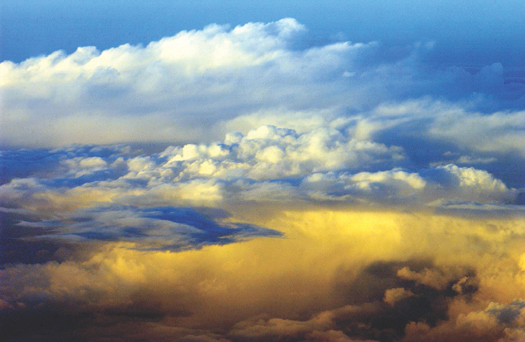
Fast-forward to the year 2005 and photography now finds itself at the center of more attention and fascination than perhaps in any other time in history. And of course, its all about the ever-changingand thus, at times, confusingworld of digital photography. Never before has such a tiny screen (the LCD) caused such a stir of emotions. No sooner than you fire the shutter release, then everyone gathers around the back of the digital camera to see the results. Expressions of joy or shouts of frustration fill the air quickly as the digital camera lives up to its promise of instant gratificationeven if that promise includes the not-so-gratifying evidence that something went terribly wrong!
If there is one prevailing digital-photography mantra being shouted from the rooftops by camera owners worldwide, it is this: I dont ever to have buy film again! I can shoot and shoot and shoot, make tons of mistakes, and never worry about going overboard on my film coststhats why I love digital! So, is conventional photography as we know it dead? Listening to the industry watchers, the consensus seems to be no, at least according to the likes of Fuji and Kodak. The match between film shooters (or those who have now become the purists) and those who have given it all up for digital has just begun. I understand the purist mentality. I once was a purist myself. And, although we are still in the early days, digital photography has already impressed both the judges and fans at ringside. Digital photography is truly a formidable opponent to those purists, and I for one believe that the day will come when digital will finally deliver the knockout blow.





